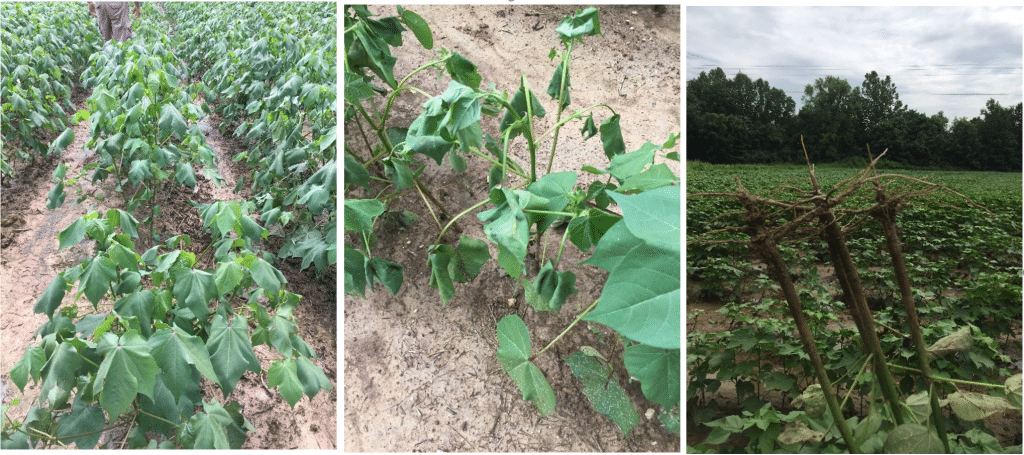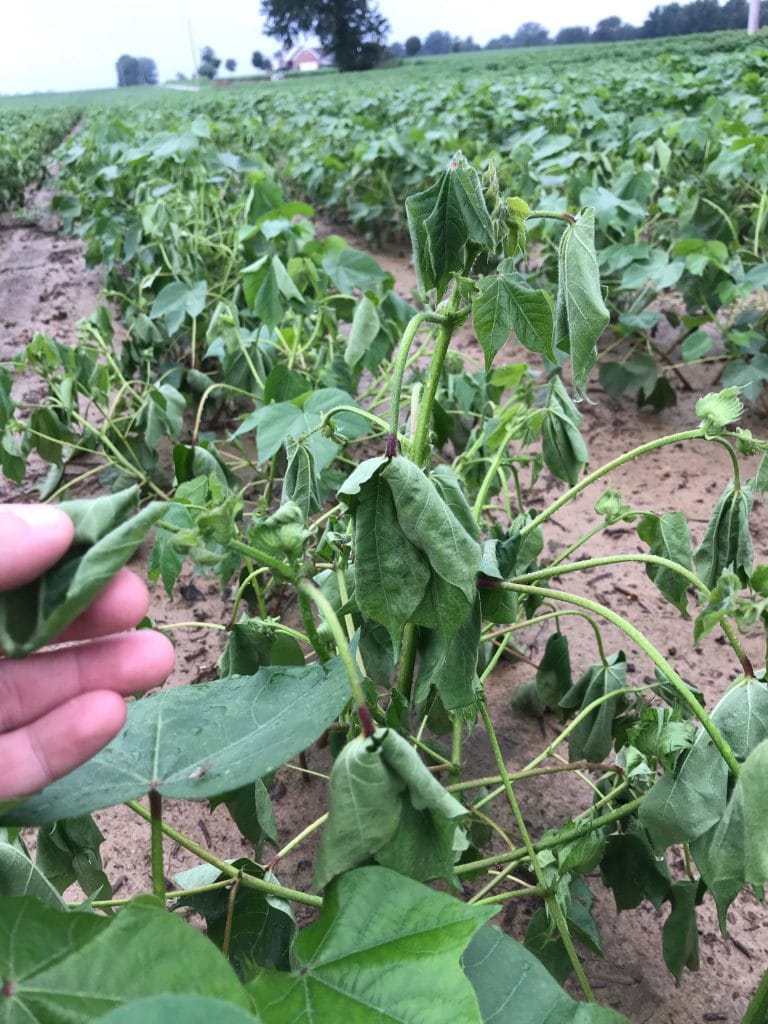Authors: Avat Shekoofa and Tyson Raper
Reports of ‘sudden wilt’, ‘parawilt’, or ‘wet wilt’ began Wednesday afternoon and continued through Thursday. This article briefly explains the phenomena and discusses management during recovery.

Cotton is very sensitive to prolonged periods of saturated soils (Fig. 1). Even incomplete saturation can lower respiration rates below the level required to sustain plant growth. The growth stage, length of time under the stress, and amount of rainfall/depth of flooding determine response severity.
When the soil becomes saturated, or ‘waterlogged’, water replaces air in all soil pores. Without air, oxygen deficits develop quickly. Plants which are grow in water contain specialized cells which allow air to move down to the roots. Since cotton does not have such cells, the cotton root is unable to function normally under saturated conditions and water is no longer transported through the vascular tissue. Slight stress may include chlorosis, yellowing, reduced shoot growth, altered hormone levels, and nutrient deficiencies. As the stress progresses, wilt may become evident. If air is allowed back into the soil pore spaces soon after the stress begins, the overall impact on the plant will be negligible. However, if water continues to fill all pore spaces the plant may reach permanent wilting point.
Will impacted plants recover?
Plants which experienced short periods of saturation will likely recover. Dry weather and sunshine will allow the soil profile to dry and impacted plants to develop new growth, but this response will not be instantaneous. Since rooting structures may be damaged, expect wilted plants to be more sensitive to drought stress than normal plants. Square retention will likely fall after prolonged periods of saturation but yield impacts will likely be negligible on plants which endured short periods of stress.
Managing plant growth will likely be a challenge. Even with varieties known for their aggressive growth, exercise caution with aggressive rates following periods of saturation. Monitor the internode between the fourth and fifth node down from the mainstem to determine when the plant has resumed normal growth.
Plants which have reached permanent wilting point will likely not recover. One of the best ways to gauge severity of stress is to inspect impacted areas at daybreak. Plants under slight to moderate stress will regain turgor overnight. Plants which are under severe levels of stress will still be wilted during the early morning hours (Fig. 2). In plants experiencing severe stress, development of abscission layers at the base of petioles and peduncles of fruiting structures will likely follow.

What can be done to prevent ‘wet wilt’?
Saturated soils for prolonged periods drive the stress, but other factors likely contribute. Impacted plants are typically characterized by very poor root characteristics (little to no taproot, very shallow lateral branching). Managing compaction, increasing soil micro and macro pores with a cover crop, and selecting vigorous seed may support a larger effective rooting zone and limit the likelihood of saturating all root structures.
Sources:
- https://academic.oup.com/aobpla/article/doi/10.1093/aobpla/plv080/1798068
- https://www.publish.csiro.au/cp/pdf/CP13093
- https://www.farmprogress.com/cotton/what-should-i-do-flooded-cotton-field
- https://research-management.mq.edu.au/ws/portalfiles/portal/16799286/mq-42262-Publisher+version+%28open+access%29.pdf
- https://core.ac.uk/download/pdf/82244008.pdf
- https://ag.tennessee.edu/arec/Documents/AIMAGPubs/Water%20Analysis/PickwickDamCaseStudy.pdf

